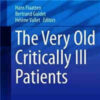Childhood sepsis deadlier for Black patients
thelancet.com
In this large, representative analysis of paediatric severe sepsis in the USA, we found evidence of outcome disparities by race or ethnicity and insurance status.
Our findings suggest that there might be differential sepsis recognition, approaches to treatment, access to health-care services, and provider bias that contribute to poorer sepsis outcomes for racial and ethnic minority patients and those of lower socioeconomic position.
Studies are warranted to investigate the mechanisms of poorer sepsis outcomes in Black and Hispanic children.
12,297 children (aged 0–21 years) with severe sepsis with or without shock were admitted to 1,253 hospitals in the 2,016 KID dataset.
1,265 (10·3%) of 12,297 patients did not have race or ethnicity data recorded, 15 (0·1%) were missing data on insurance, and 1,324 (10·8%) were transferred out of hospital, resulting in a final cohort of 9,816 children.



















